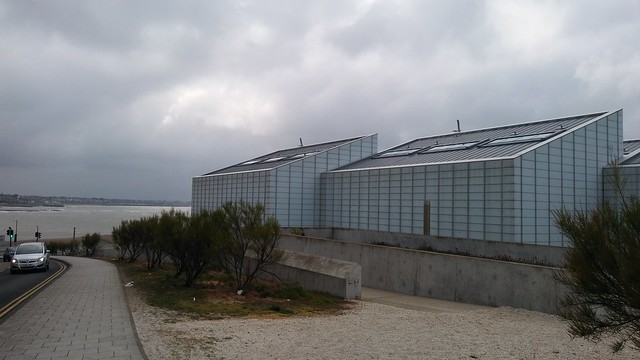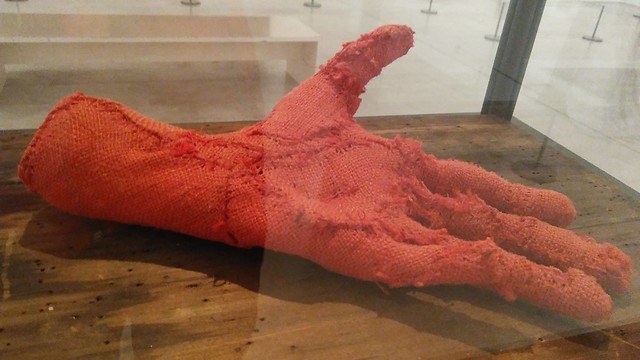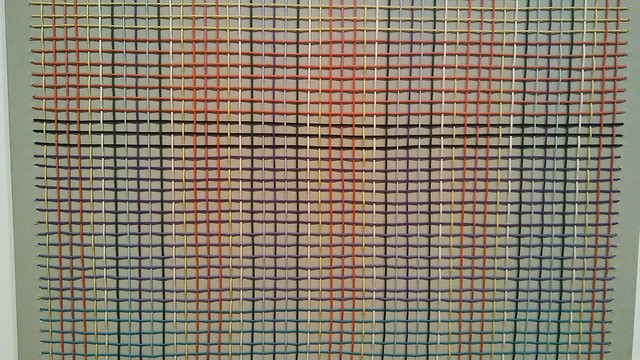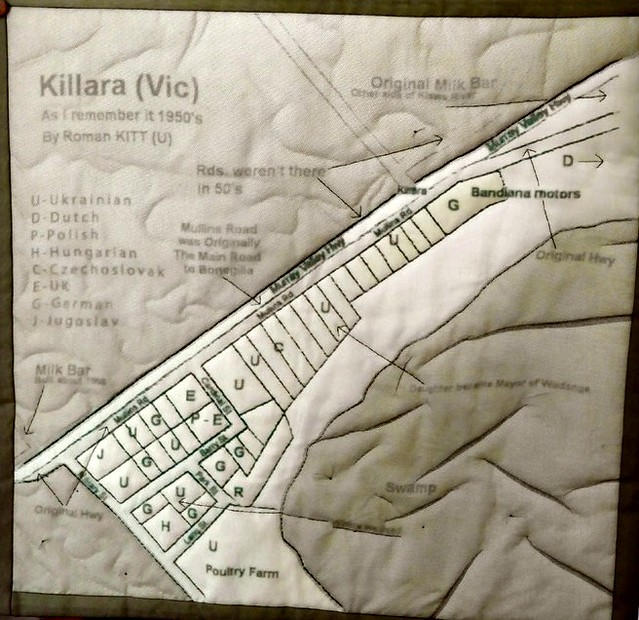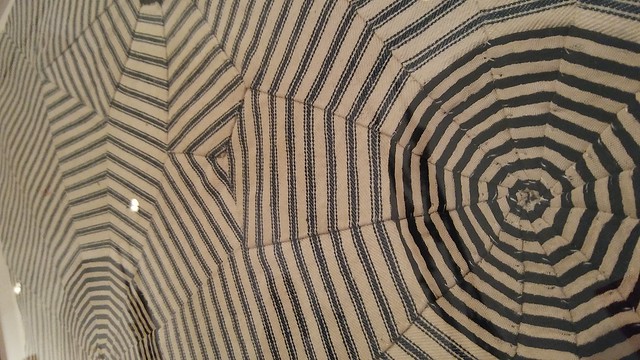On Wednesday I went to the Turner Contemporary art gallery in the famous seaside town of Margate. My sister and I have plans to visit Margate on Monday, as she has a work commitment there. But I wanted to visit the 'thread art' exhibition which ends on Sunday.
Turner Contemporary is part of a vision to make Margate a cultural hub. Clearly it has a long way to go. For a start, the building's modern architecture does not sit well with the 19th century seaside resort and 'seen better days' ambience of the rest of the town.
That's not to say the gallery does not have a special affinity with Margate. Margate is where the renowned landscape painter J.M.W. Turner (1775-1851) came many times to produce work.
He was drawn by the unique quality of light in this part of Kent, and the skies that he called 'the loveliest in all Europe'. Turner Contemporary is built on the site of the boarding house where he stayed when he visited the town.
I was speaking with a woman who'd come all the way from Devon to see the exhibition. She described the building as a monstrosity. I imagine that impression will change as takes shape as a cultural hub in the coming decades and more modern architecture appears on the landscape.
That is what happened at St Ives, the isolated fishing village in Cornwall I visited last May. It is the site of the Tate St Ives, a satellite gallery of the London Tate, and many other art activities and enterprises.
Turner Contemporary first came to my attention as the gallery from which the 2016 Grayson Perry exhibition at Sydney's Museum of Contemporary Art had come. I had a thought that the current exhibition - Entangled: Threads and Making - might also come to Sydney. But the staff at Turner Contemporary told me that many of the works were too fragile to travel and Sunday would be the end.
For me, the appeal of 'thread art' is that the piece of art I commissioned two years ago to preserve an aspect of my family's history was from that genre. I've come to appreciate it since then, though I was not especially attracted to it beforehand.
A local university historian had given me a hand drawn map of a housing subdivision on our farm that had an interesting story I wanted remembered. I decided it would form the basis for a piece of art. The artist I was put in contact with happened to be a textile artist, and I came to love the form of the work she produced (below).
Entangled is the work of 40 international female artists from the mid 20th century to the present. It includes sculpture, installation, tapestry, textiles and jewellery.
I found it mesmerising. It was easy to lose myself in many of the exhibits. It's difficult to single out any particular work, but what lingered for me were two quotations that were on the wall in one area of the exhibition.
One suggested to me that thread art - and art in general - is akin to meditation: 'Being creative is not so much the desire to do as the listening to that which one wants to be done: the dictation of the materials.' (Anni Albers)
The other presents this style of art as a kind of mental massage: 'A lot of my work is just repetitive activity. I find that calming and free.' (Kiki Smith)
When I return to my house in Sydney on 1st June, I will look at the artwork on my wall with an elevated appreciation of 'thread art'.
